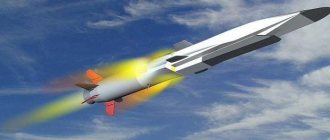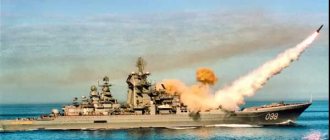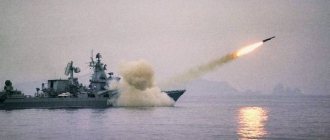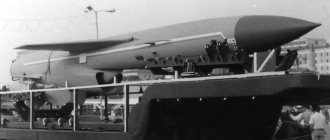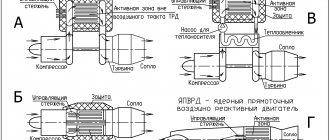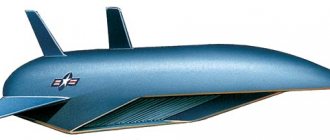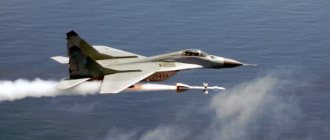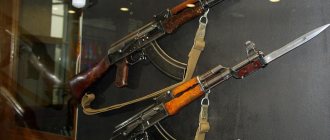The international policy of Western countries (primarily England) of the late 19th – early 20th centuries is often called “gunboat diplomacy” by historians for their desire to solve foreign policy problems through the threat of using military force. If we follow this analogy, then the foreign policy of the United States and its allies in the last quarter of the 20th and the beginning of this century can be safely called “tomahawk diplomacy.” In this phrase, “tomahawk” does not mean the favorite weapon of the indigenous population of North America, but the legendary cruise missile, which the Americans have regularly used in various local conflicts for several decades.
This missile system began to be developed back in the first half of the 70s of the last century; it was put into service in 1983 and since then it has been used in all conflicts in which the United States took part. Since the adoption of the Tomahawk into service, dozens of modifications of this cruise missile have been created, which can be used to destroy a wide variety of targets. Today, the US Navy is armed with fourth-generation BGM-109 missiles, and their further improvement continues.
Tomahawks turned out to be so effective that today they themselves are practically synonymous with a cruise missile. More than 2 thousand missiles have been used in various conflicts, and despite some misses and failures, these weapons have proven to be very effective.
A little history of the Tomahawk missile
Any cruise missile (CM) is, in fact, a flying bomb (by the way, the first samples of this weapon were called that), a disposable unmanned aerial vehicle.
The history of the creation of this type of weapon began at the beginning of the 20th century, before the outbreak of the First World War. However, the technical level of that time did not allow the production of operating systems.
Humanity owes the appearance of the first serial cruise missile to the gloomy Teutonic genius: it was launched into production during the Second World War. "V-1" took an active part in the hostilities - the Nazis used these missiles to attack British territory.
The V-1 was equipped with an air-breathing engine, its warhead weighed from 750 to 1000 kilograms, and its flight range reached from 250 to 400 kilometers.
The Germans called the V-1 a “weapon of retaliation,” and it was indeed quite effective. This rocket was simple and relatively cheap (compared to the V-2). The price of one product was only 3.5 thousand Reichsmarks - approximately 1% of the cost of a bomber with a similar bomb load.
However, no “miracle weapon” could save the Nazis from defeat. In 1945, all the Nazis' developments in the field of rocket weapons fell into the hands of the Allies.
In the USSR, the development of cruise missiles immediately after the end of the war was carried out by Sergei Pavlovich Korolev, then another talented Soviet designer, Vladimir Chelomei, worked in this direction for many years. After the beginning of the nuclear era, all work in the field of creating missile weapons immediately acquired the status of strategic, because missiles were considered as the main carrier of weapons of mass destruction.
In the 50s, the USSR was developing an intercontinental cruise missile, the Burya, which had two stages and was designed to deliver nuclear warheads. However, work was stopped for economic reasons. In addition, it was during this period that real successes were achieved in the field of creating ballistic missiles.
The United States also developed the SM-62 Snark cruise missile with an intercontinental range; it was even on combat duty for some time, but was later withdrawn from service. It became clear that in those days ballistic missiles turned out to be a much more effective means of delivering a nuclear charge.
The development of cruise missiles in the Soviet Union continued, but now the designers were given slightly different tasks. Soviet generals believed that such weapons were an excellent means of fighting against the ships of a potential enemy, and they were especially concerned about the American carrier strike groups (AUG).
Huge resources were invested in the development of anti-ship missile weapons, thanks to which the Granit, Malachite, Mosquito and Onyx anti-ship missiles appeared. Today, the Russian Armed Forces have the most advanced types of anti-ship cruise missiles; no other army in the world has anything like it.
Media (As of 2008)
- 31 Los Angeles-class nuclear submarines, up to 12 cruise missiles;
- 4 Ohio-class nuclear submarines, 154 cruise ships each;
- 3 Seawolf-class nuclear submarines, up to 50 cruise missiles;
- 3 Virginia-class nuclear submarines, up to 12 cruise missiles;
- British attack nuclear submarine "Astyut" (2007, the first of four of this class), displacement 7200/7800 tons, service life ~ 30 years, 6 torpedo launchers, 38 missile launchers;
- Arleigh
Burke-class destroyers are in service and 8 more are being built at the Brunswick and Pascagoula shipyards, armament 90/96 KR (depending on the series of the ship); - 22 missile cruisers of the Ticonderoga class, in the standard version - 26 missile cruisers;
- starting in 2013, the launch of 2 new destroyers of the DDG-1000 series with 80 missiles each
Creation of the Tomahawk
In 1971, American admirals initiated the development of sea-launched strategic cruise missiles (SLCMs) capable of being launched from submarines.
Initially, it was planned to create two types of missile launchers: a heavy missile with a flight range of up to 5,500 km and launched from SSBN missile launchers (55 inches in diameter) and a lighter version that could be launched directly from torpedo tubes (21 inches). The light missile launcher was supposed to have a flight range of 2,500 kilometers. Both missiles had a subsonic flight speed.
In 1972, a lighter rocket option was chosen and the developers were given the task of creating a new SLCM (Submarine-Launched Cruise Missile) rocket.
In 1974, the two most promising missile launchers were selected for demonstration launches; they turned out to be projects from General Dynamics and Ling-Temco-Vought (LTV). The projects were given the abbreviations ZBGM-109A and ZBGM-110A, respectively.
Two launches of the product created at LTV ended in failure, so the General Dynamics rocket was declared the winner of the competition, and work on the ZBGM-110A was stopped. The revision of the CD has begun. During the same period, the leadership of the US Navy decided that the new missile should be able to launch from surface ships, so the meaning of the acronym (SLCM) was changed. Now the missile system under development has become known as the Sea-Launched Cruise Missile, that is, a “sea-based cruise missile.”
However, this was not the last introduction that the developers of the missile system encountered.
In 1977, the American leadership initiated a new program in the field of missile weapons - JCMP (Joint Cruise Missile Project), the goal of which was to create a single (for the Air Force and Navy) cruise missile. During this period, the development of air-launched missile launchers was actively underway, and the combination of two programs into one led to the use of a single Williams F107 turbofan engine and an identical navigation system in all missiles.
Initially, the naval missile was developed in three different versions, the main differences of which were their warhead. A variant was created with a nuclear warhead, an anti-ship missile with a conventional warhead and a missile launcher with a conventional warhead, designed to strike ground targets.
In 1980, the first tests of a naval modification of the missile were carried out: at the beginning of the year the missile was launched from a destroyer, and a little later the Tomahawk was launched from a submarine. Both launches were successful.
Over the next three years, more than a hundred Tomahawk launches of various modifications took place; based on the results of these tests, a recommendation was issued to accept the missile system into service.
First experiments
The development of cruise missiles for the fleet was carried out earlier. Old models were taken as a basis, which is why new weapon options appeared quite quickly.
- The first step in this direction was the Polaris rocket, which had a diameter of 55 inches. The range of such a missile was up to 3000 nautical miles. The leadership of the US Navy considered this option the most profitable, because in this case the fleet would not have to be re-equipped;
- the second prototype was a lighter cruise missile with a diameter of 21 inches. Its range was 1,500 nautical miles. It was intended to be launched from submarine torpedo tubes.
See also the article New Russian Zircon rocket - 3M22 and its characteristics
Subsequently, these two options were presented in 1971 to the leadership of the US Navy.
BGM-109 Tomahawk navigation system
The main problem with using cruise missiles against objects located on land was the imperfection of guidance systems. That is why cruise missiles have long been practically synonymous with anti-ship weapons. Radar guidance systems perfectly distinguished surface ships against the background of a flat sea surface, but they were not suitable for hitting ground targets.
The creation of the TERCOM (Terrain Contour Matching) guidance and course correction system was a real breakthrough that made the creation of the Tomahawk missile possible. What is this system and on what principles does it work?
The work of TERCOM is based on the verification of altimeter data with a digital map of the earth's surface embedded in the on-board computer of the rocket.
This gives the Tomahawk several advantages that made this weapon so effective:
- Flight at extremely low altitude, skirting the terrain. This ensures the missile's high stealth and makes it difficult to destroy by air defense systems. Tomahawk can only be discovered at the last moment, when it is too late to do anything. It is no less difficult to see a missile from above against the background of the earth: its detection range by aircraft does not exceed several tens of kilometers.
- Full autonomy of flight and target guidance: Tomahawk uses information about the unevenness of the terrain to correct the course. You can deceive the rocket only by changing it, which is impossible.
However, the TERCOM system also has disadvantages:
- The navigation system cannot be used over the water surface; before the flight begins over land, the CD is controlled using gyroscopes.
- The effectiveness of the system decreases over flat, low-contrast terrain, where the elevation difference is insignificant (steppe, desert, tundra).
- Quite a high value of circular probable deviation (CPD). It was about 90 meters. For missiles with nuclear warheads this was not a problem, but the use of conventional warheads made such an error problematic.
In 1986, the Tomahawks were equipped with an additional navigation and flight correction system, DSMAC (Digital Scene Matching Area Correlation). It was from this moment that the Tomahawk turned from a weapon of thermonuclear Armageddon into a threat to everyone who does not love democracy and does not share Western values. The new modification of the missile was named RGM/UGM-109C Tomahawk Land-Attack Missile.
How does DSMAC work? The cruise missile enters the attack zone using the TERCOM system, and then begins to compare images of the terrain with digital photographs stored in the on-board computer. Using this method of guidance, a missile can hit a separate small building - the CEP of the new modification has decreased to 10 meters.
Cruise missiles with a similar guidance system also had two modifications: Block-II attacked the selected target at low level, while Block-IIA, before hitting the target, made a “slide” and dived onto the object, and could also be remotely detonated directly above it.
However, after installing additional sensors and increasing the mass of the warhead, the flight range of the RGM/UGM-109C Tomahawk was reduced from 2500 km to 1200. Therefore, in 1993, a new modification appeared - Block-III, which had a reduced mass of the warhead (while maintaining its power) and a more advanced engine, which increased the Tomahawk's flight range to 1,600 km. In addition, Block-III became the first missile to receive a guidance system using GPS.
Ax of war. Five myths about the Tomahawk missile
They will rain fire from the sky. Like a gust of “divine wind” sweeping enemy battalions from the face of the Earth. Winged suicide robots. They are braver than the bravest kamikazes and more ruthless than the fiercest SS Sonderkommandos.
Not a single muscle will tremble in the face of death. Machines are not afraid to kill and die. They are already dead to begin with. And, if necessary, they will disappear without hesitation in a blinding flash when colliding with a target.
In the meantime... the rocket rushes through the darkness of the night to the place of its death. An hour ago, she left the cozy cell on board the submarine and, breaking through a layer of cold water, jumped to the surface. The booster flame roared, lifting the Tomahawk to a height of 1,000 feet. There, on the descending branch of the launch site, the engine air intake extended, the short wings and tail unit opened: the combat robot rushed behind the head of its victim. Now nothing can save the unfortunate people whose photographs are placed in the memory of the flying killer...
Myth No. 1. "Tomahawk" solves everything.
Nikita Sergeevich, are you still here?!
Missile euphoria does not leave minds and hearts: the impressive capabilities of the “Axe” have given rise to confidence that the use of cruise missiles alone can bring victory in any war.
Why risk an expensive plane and the priceless life of the pilot? These endless trainings and advanced training of flight crews. Airfields, fuel, ground support personnel... Why such difficulties and unjustified risk if you can drive a squadron of submarines and bombard the enemy with thousands of flying suicide robots? The flight range of the "Axe" in the "conventional" version - 1200...1600 km - allows you to complete the mission without entering the enemy army's kill zone. Simple, effective and safe.
12 launchers in the bow of the Los Angeles-class submarine
The mass of the missile warhead is 340 kg. There are a dozen different warhead variants for different types of targets: cluster, armor-piercing, semi-armor-piercing, “regular” high-explosive warheads... Several attack algorithms: from horizontal flight, from a dive, with detonation during horizontal flight over the target. All this allows you to complete almost any task on enemy territory.
Eliminate the selected target, destroy any military or civilian infrastructure. Destroy the airfield's runway, set fire to a hangar with military equipment, knock down a radio tower, blow up a power plant, break through several meters of earth and concrete - and destroy a protected command post.
Work is continuously underway to expand the tactical flexibility of using cruise missiles: the latest modification of the RGM/BGM-109E Tactical Tomahawk was equipped with satellite communications and GPS navigation units. The new missile can loiter in the air, waiting for the right moment to attack. In addition, she gained the ability to reprogram in flight and, depending on the situation, attack one of 15 pre-designated targets.
Attack from level flight
The only thing that the Tomahawk still cannot do is attack moving objects.*
* the ability to effectively hit moving targets, incl. ships, was implemented in the Tomahawk modification Block IV Multi-Mode Mission (TMMM), which was recognized as excessively expensive and was never adopted by the US Navy
In addition, there was a modification of the BGM-109B Tomahawk Anti-Ship Missle (TASM) - an anti-ship version of the Tomahawk with an active radar seeker from the Harpoon anti-ship missile system. Due to the lack of a worthy enemy, TASM was withdrawn from service about 10 years ago.
Intercept a convoy with weapons (for example, S-300 air defense vehicles on the march) or delay an advancing tank battalion? Modern cruise missiles are powerless on such missions. We'll have to call the air force. Front-line bombers, attack aircraft, attack helicopters, UAVs, in the end - these “birds” still have no equal over the battlefield. High tactical flexibility (up to complete cancellation of the mission and return to base) and a wide range of ammunition make aviation indispensable in the fight against ground targets.
Nevertheless, the trend is clear: the experience of local wars over the past 20 years has demonstrated a 10-fold increase in the role of sea-launched cruise missiles (SLCMs). Every year, “Tomahawks” acquire new skills and “gain permission” to perform increasingly complex tasks.
The destroyer USS Barry (DDG-52) shells Libya as part of Operation Odyssey Dawn (2011)
As practice has shown, SLCMs are quite successful in “trampling” a victim into the Stone Age, destroying the air defense system and disorganizing the enemy army. Left in the very first hours of the war without radars, air defense systems, airfields, power plants, fuel storage facilities, cell and radio communication towers, command posts and other strategically important objects, the enemy turns out to be unable to provide serious resistance. Now you can take it “warm”.
In such conditions, ultra-expensive and complex stealth aircraft and other “raptors” become unnecessary. Bomb bridges and retreating tank columns from an unattainable height? Simple and cheap F-16s can easily cope with this task.
Myth No. 2. "Tomahawk" is capable of hitting a window.
The accuracy of the Tomahawk is a source of heated debate. During Operation Desert Storm, fragments of American missiles were found even on Iranian territory - some of the Axes veered off course by several hundred kilometers! The result of a programmer error or an accidental failure in the on-board computer of the rocket...
But what are the real capabilities of the Tomahawks? What is the calculated value of their circular probable deviation (CPD)?
Traditional Tomahawk guidance methods include:
— INS for flights over areas with weak radar contrast (for example, over the sea - the water is the same everywhere). Gyroscopes and accelerometers operate until the missile arrives in the first correction area over the enemy’s coast, then guidance is carried out using more high-tech methods.
— Terrain Contour Matching (TERCOM) relief metric system — scans the underlying terrain and compares the received data with radar images stored in the rocket’s memory.
The very principle of TERCOM’s operation is the basis for many jokes: “While the Yankees are preparing the flight mission, our construction battalion will dig up the entire terrain again”! But seriously speaking, TERCOM is one of the most reliable and effective methods of targeting SLCMs. The Tomahawk navigates the terrain autonomously: it does not need constant guidance from a satellite or from a remote operator. This increases reliability and eliminates the risk of being deceived by enemy signals.
On the other hand, this imposes a number of limitations - for example, TERCOM is ineffective when flying over deserts or snowy tundra. The terrain should include a maximum of contrasting objects (hills, roads and clearings, railway embankments, populated areas). The route is laid in such a way as to avoid open water spaces (lakes, estuaries of large rivers, etc.) on the missile's path - otherwise, this can lead to critical failures in the missile's navigation system.
All this creates for the Yankees such a problem as the “predictability” of their missile attacks and, as a result, an increase in losses among the missiles fired. The enemy (if, of course, he has even an iota of intelligence) will quickly figure out the main directions of the threat and deploy air defense systems there.
— The third method of guidance. The optical-electronic system DSMAC in the final part of the trajectory of the rocket behaves like the legendary Terminator from the James Cameron action movie: it continuously scans the area with its electronic “eye”, comparing the appearance of the “victim” with a digital photograph embedded in its memory. The future has already arrived!
— Finally, the latest modification of the Ax has gained the ability to navigate using GPS data. This greatly simplifies the process of preparing for launch, because... there is no need for complex maps for TERCOM operation (routes and radar images of the area are prepared in advance, on shore - in the flight mission preparation centers on the territory of the Norfolk and Camp Smith naval bases).
If operating in GPS navigation mode, the ship’s crew can independently “drive” coordinates into the rocket’s memory, without any specific description of the target - then the rocket will do everything itself, simply exploding near the specified location. Accuracy decreases, but efficiency increases. Now SLCMs can be used as a means of fire support and work on emergency calls for Marines.
In field conditions, if there are high-quality images of the “target”, the value of the circular probable deviation of the “Tomahawk” is indicated within 5...15 meters. And this is with a launch range of 1000 kilometers or more! Impressive.
Myth No. 3. The Tomahawk is easy to shoot down.
Well, then do it! Does not work?…
The safety of the Ax is ensured by its secrecy. Its extremely low flight altitude—just a few tens of meters—makes it invisible to ground-based radars. The radio horizon in this case does not exceed 20-30 km, and if we take into account natural obstacles (hills, buildings, trees), detecting a low-flying missile that cleverly hides in the folds of the terrain seems to be a very dubious undertaking.
Special operations boat based on the USS Ohio. In total, the ship's 22 missile silos accommodate 154 Tomahawks + 2 silos are used as airlocks for combat swimmers
To detect, escort and hit such a “difficult target” from the ground - this requires a large amount of luck and, preferably, knowledge of the most likely approach routes for Tomahawks. A coincidence, nothing more. There is no need to talk about any effective counteraction to swarms of SLCMs.
Intercepting an Ax using airborne means is no less difficult - the missile’s small size and ESR make “hunting Tomahawks” an extremely difficult undertaking.
Dimensions of the Tomahawk SLCM: length - 5.6 m, wingspan - 2.6 m. For comparison, the dimensions of the Su-27 fighter: length - 22 meters, wingspan - 14.7 meters.
“Axe” has a smooth, streamlined shape, without any radio-contrast parts or hanging elements. The Yankees are hinting at the use of radio-absorbing coatings and materials transparent to radio waves in its design. Even without taking into account the elements of stealth technology, the effective dispersion area of the Tomahawk missile does not exceed 1 square meter. meters - too little to detect it from a great distance. Finally, the search for a flying missile is carried out against the background of the earth, which introduces additional difficulties into the operation of fighter radars.
Official data on the MiG-31 interceptor confirms the following: from an altitude of 6000 meters, target acquisition with an EPR of 1 square. meter flying at an altitude of 60 meters is carried out at a distance of 20 km. Considering that only one SSGN on the Ohio platform is capable of launching up to 154 SLCMs, the required number of fighters to repel an attack will exceed the capabilities of the Air Force of any of the countries against which the Yankees are going to fight.
Wreckage of a downed Tomahawk at the Belgrade Aviation Museum
In practice, the situation looked like this: during the NATO aggression against Yugoslavia, the US and British Navy fired about 700 Tomahawks at targets on the territory of the FRY. Official Serbian sources give figures of 40...45 SLCMs shot down, NATO representatives disagree and give even lower figures. In general, the situation is sad: the Serbian military barely managed to shoot down 5% of the missiles fired at them. It is noteworthy that one of the "Axes" was shot down by a Serbian MiG-21 - the pilot established visual contact with it, got close and shot the robot from the on-board cannon.
Myth No. 4. "Tomahawks" are only suitable for war with the Papuans.
The cost of a Tomahawk missile, depending on its modification and type of warhead, can reach $2 million. To release 500 of these “things” means ruining the US budget by 1 billion green banknotes. Flight range 1200…1600 km. Warhead 340 kg. Combined guidance system - relief TERCOM, DSMAC, satellite communication and navigation systems. The starting weight is within one and a half tons. Carriers are destroyers and nuclear submarines.
No, gentlemen. Such destructive and expensive weapons were not created to exterminate the unfortunate inhabitants of Papua New Guinea. The Tomahawk should be used wisely; just scattering two million rockets across the desert is an unheard of extravagance even for wealthy Yankees.
Launch of a Tomahawk SLCM from the nuclear-powered cruiser USS Mississippi (CGN-40), Operation Desert Storm, 1991. The missile is launched from an armored launcher Mk.143 Armored Launch Box
It doesn’t take a lot of brains to determine the purpose of cruise missiles - a stunning blow to the military and civilian infrastructure of an enemy that has some military potential: Syria, Iran, Iraq, Yugoslavia... Against those who are able to snap back and resist.
In these cases, the Yankees pull out their “insurance policy” from their sleeve - a flock of flying killers that will “clear” corridors in the country’s air defense system, disorganize the enemy army and allow NATO aircraft to seize air supremacy. The Tomahawk cruise missile is not subject to any arms limitation treaties or conventions, which means you can feel free to launch Axes left and right without any remorse.
As for ordinary Basmachi with Berdan guns, the Yankees smear them with 105 mm howitzers installed in the openings of the sides of the AS-130 “gunships”. Tomahawk missiles and other high-tech are of no use there.
Myth No. 5. "Tomahawks" pose a danger to Russia
Russia, along with India and China, is one of the few countries that can ignore the US Navy and its saber-rattling. The Tomahawk is a purely tactical weapon for local wars. This trick won’t work with Russia—the Russian General Staff won’t understand American jokes, and it could end in a terrible thermonuclear massacre.
Even in theory, with a ratified treaty with the United States on mutual renunciation of the use of nuclear weapons, naval cruise missiles are ineffective against purely continental Russia - all industrial centers, arsenals and strategically important facilities are located a thousand kilometers from the coast, at the limit of the Tomahawk’s flight range.
As for the possible equipping of the Axes with thermonuclear warheads, this threat would only make sense in the absence of intercontinental ballistic missiles. In the event of a war with the use of Trident-2, a belated strike with cruise missiles (the flight time of the Tomahawks will be many hours) will no longer have any significance.
The thrifty Yankees were well aware of the futility of the Ax as a carrier of nuclear weapons, so they scrapped all their nuclear SLCMs 20 years ago.
Number of nuclear warheads in service with the US Armed Forces. Thick line - strategic warheads for ICBMs. The thin line is “tactical” nuclear weapons, incl. "Tomahawks" with SBC
Launching a Tomahawk from the bow launcher of the destroyer USS Farragut (DDG-99)
Modifications of “Tomahawks”
Taking into account the active use of Tomahawks, the US military leadership set the manufacturer the task of significantly reducing the cost of their product and improving some of its characteristics. This is how the RGM/UGM-109E Tactical Tomahawk appeared, which entered service in 2004.
This rocket used a cheaper plastic body and a simpler engine, which almost halved its cost. At the same time, the “Axe” has become even deadlier and more dangerous.
The rocket used more advanced electronics; it is equipped with an inertial guidance system, the TERCOM system, as well as DSMAC (with the ability to use infrared images of the area) and GPS. In addition, the tactical Tomahawk uses a two-way UHF satellite communications system, which allows the weapon to be retargeted in flight. A television camera installed on the missile defense system makes it possible to assess the state of the target in real time and make decisions about continuing the attack or striking another object.
Today, the Tactical Tomahawk is the main modification of the missile in service with the US Navy.
The next generation Tomahawk is currently being developed. The developers promise to eliminate in the new missile the most serious drawback inherent in current modifications: the inability to hit moving sea and ground targets. In addition, the new Topor will be equipped with a modern millimeter-wave radar.
Comparison of characteristics
Let’s compare the characteristics of the tactical Tomahawk with the Russian Kalibr cruise missile designed to hit targets on land.
| Parameter | RGM/UGM-109E | 3M-14E |
| Warhead type and weight, kg | 340 | 450 |
| Flight range, km | 1600 | from 2000 |
| Flight altitude, m | 30-50 | 50-150 |
| Speed, M | 0,75 | 0,8 |
| Guidance system | Inertial; correction based on GPS data and two-way satellite communication | Inertial; radar; correction according to GPS data (GLONASS) |
The Caliber family of missiles were developed back in the 80s, but their characteristics are still unknown exactly (with the exception of export series). The flight range is usually specified at 2,000 kilometers, which exceeds the Tomahawk's range. Interestingly, the Russian analogue is equipped with its own guidance radar - possibly to maintain anti-ship qualities. In general, the samples can be considered equivalent in effectiveness.
Relatively cheap and, moreover, effective Tomahawks have significantly increased the strike capabilities of the American fleet. Even destroyers were able to deliver powerful strikes against strategically important enemy targets. Of course, the missiles also had their drawbacks. Thus, the control system of nuclear Tomahawks required loading into it detailed maps of the area, which were not always available. And on flat terrain without clear landmarks, navigation could be completely lost.
Low speed and constant improvement of air defense systems (while the missile’s flight qualities remain unchanged) increasingly complicate its ability to break through serious defenses.
But this does not affect the actual effectiveness - in real conditions of use it was not necessary to encounter serious defense.
It is unknown how long the United States will adhere to its current foreign policy course. But since the creation of promising cruise missiles has not been announced, there is no doubt that the “hatchet” is not yet going to be buried.
Application of BGM-109 Tomahawk
The Tomahawk has been used in every conflict in recent decades in which the United States has been involved. The first serious test for these weapons was the Gulf War in 1991. During the Iraqi campaign, almost 300 missile launchers were launched, the vast majority of which successfully completed the mission.
Later, the Tomahawk missile launcher was used in several smaller operations against Iraq, then there was the war in Yugoslavia, the second Iraqi campaign (2003), as well as the operation of NATO forces against Libya. Tomahawks were also used during the conflict in Afghanistan.
Currently, BGM-109 missiles are in service with the US and British Armed Forces. Holland and Spain showed interest in this missile system, but the deal never took place.
"Tomahawk" - "smart" weapon
But the main distinguishing feature of the Tomahawks is not these wings, but the complex of systems that control them.
It is the “smart” filling that allows the rocket to remain in the air and literally circle within the radius of destruction of a given target until the remote operator sends it a command to detonate. The missile can remember up to fifteen targets, with a detailed indication of the coordinates and detailed characteristics of each. This feature allows you to instantly redirect the Tomahawks to another mark if, for some reason, the original target is unsuitable for attack.
The Tactical Command System or "TTWCS" is responsible for managing this function.
In addition to it, there are also other complex systems on board the missile, which ensure precise hit accuracy and the most responsive control of the Tomahawk.
Let's talk about each of these systems in more detail.
"GPS"
Everyone knows what it is. For the Tomahawk, this is the main coordination system, since the location of the target is primarily known to the missile via GPS coordinates. In addition, thanks to GPS, the rocket updates its flight path and changes it if necessary.
"INS"
This system acts as an auxiliary system for other systems, or coordinates missile guidance if GPS and TERCOM-DSMAC are blocked for some reason. It includes a gyroscope and an accelerometer, the readings of which allow you to calculate the direction and required speed to hit the target.
"TERCOM-DSMAC"
The most interesting system is the Tomahawk, consisting of two subsystems. TERCOM uses data from the radar altimeter and compares it with existing terrain information. DSMAC does similar work, but uses satellite photos.
Together, these two systems create an extremely strong symbiosis, allowing not only to coordinate the flight of a missile, but also to carry it out at the lowest possible altitude, in an area inaccessible to radar.
BGM-109 Tomahawk device
The Tomahawk cruise missile is a monoplane equipped with two small folding wings in the central part and a cross-shaped stabilizer in the tail. The fuselage is cylindrical in shape. The missile has a subsonic flight speed.
The body consists of aluminum alloys and (or) special plastic with low radar signature.
The control and guidance system is a combined one; it consists of three components:
- inertial;
- by terrain (TERCOM);
- electro-optical (DSMAC);
- using GPS.
Anti-ship modifications have a radar guidance system.
To launch missiles from submarines, torpedo tubes (for older modifications) or special launchers are used. For launching from surface ships, special launchers Mk143 or UVP Mk41 are used.
At the head of the missile launcher there is a guidance and flight control system, followed by a warhead and a fuel tank. At the rear of the rocket is a bypass turbojet engine with a retractable air intake.
An accelerator is attached to the tail section, giving initial acceleration. It carries the rocket to a height of 300-400 meters, after which it separates. Then the tail fairing is dropped, the stabilizer and wings are deployed, and the main engine is turned on. The rocket reaches a given altitude (15-50 m) and speed (880 km/h). This speed is quite low for a rocket, but it allows for the most economical use of fuel.
The warhead of a missile can be very different: nuclear, semi-armor-piercing, high-explosive fragmentation, cluster, penetrating or concrete-piercing. The mass of warheads of different missile modifications also varies.
What is the main feature of the Tomahawk missile launcher?
The main advantage that the Americans managed to achieve as a result of the creation of the Tomahawk cruise missile is the almost complete invulnerability of the weapon to air defense systems. A cruise missile launched towards a target flies at a low altitude, skirting relief features during its flight. Ground-based air defense systems in such a situation are unable to quickly respond to the flight of a projectile, practically not seeing it in flight. The missile's stealth in flight is facilitated by the missile's streamlined body, equipped with protective materials.
Tomahawk in flight
It is possible to identify a flying Tomahawk only if its flight route is known in advance. A clear example of the invulnerability of cruise missiles to ground-based air defense systems was the conflict in Yugoslavia. Of the 700 Tomahawk Block III cruise missiles, created in the early 90s, fired at targets in Yugoslavia, no more than fifty missiles were shot down. The missiles were shot down either on approach to the territory of Yugoslavia by air defense systems, or were attacked already on the territory of Yugoslavia by planes of the Yugoslav Air Force. The Yugoslavs were able to achieve such results due to one significant drawback that American miracle axes possess. The cruise missile has a low speed, which makes it vulnerable to fighter aircraft fire. The pilot of a modern aircraft, upon visual detection of a flying projectile, can easily catch up with it and destroy it.
Flight of the Tomahawk
With a single launch, it is almost impossible to detect an incoming missile. The massive use of cruise missiles provides the possibility of simultaneous strikes against both strategic targets and identified targets of the enemy’s air defense system. Such a combined strike practically paralyzes the enemy, further limiting his actions.
Advantages and disadvantages of the BGM-109 Tomahawk
The Tomahawk is undoubtedly a highly effective weapon. Universal, cheap, capable of solving many problems. Of course, it has disadvantages, but there are many more advantages.
Advantages:
- due to the low flight altitude and the use of special materials, Tomahawks are a serious problem for air defense systems;
- missiles have very high accuracy;
- these weapons are not covered by cruise missile agreements;
- Tomahawk missile launchers have a low maintenance cost (when compared with ballistic missiles);
- this weapon is relatively cheap to produce: the cost of one missile in 2014 was $1.45 million, for some modifications it can reach $2 million;
- versatility: various types of combat units, as well as different methods of hitting objects, allow the Tomahawk to be used against a wide variety of targets.
If you compare the cost of using these missiles with conducting a full-scale air operation using hundreds of aircraft, suppressing enemy air defenses and installing jamming, then it will seem simply ridiculous. Current modifications of these missiles can quickly and effectively destroy stationary enemy targets: airfields, headquarters, warehouses and communications centers. Tomahawks were also used very successfully against enemy civilian infrastructure.
Using these missiles, you can quickly drive the country “into the stone age”, and turn its army into an unorganized crowd. The task of the Tomahawks is to deliver the first strike against the enemy, preparing the conditions for further aviation or military intervention.
The current modifications of the “Axe” also have disadvantages:
- low flight speed;
- the flight range of a conventional missile is lower than that of a missile launcher with a nuclear warhead (2500 versus 1600 km);
- inability to attack moving targets.
We can also add that the missile defense system cannot maneuver with large overloads to counter air defense systems, nor use decoys.
Currently, work on modernizing the cruise missile continues. They are aimed at extending its flight range, increasing the warhead, and also making the missile even “smarter.” The latest modifications of the Tomahawks are, in fact, real UAVs: they can patrol in a given area for 3.5 hours, choosing the most worthy “victim”. In this case, all data collected by the radar sensors is transmitted to the control center.
Flight path
For the Tomahawk missile, whose characteristics are designed to deliver a stealthy surprise strike, both correction systems provide low-altitude flight, using the terrain as cover. This solution increases stealth, makes it difficult for the enemy to detect US cruise missiles and increases the accuracy of their hitting the target.
Flight path using correction systems
- Start.
- Area of the first correction according to the TERCOM system.
- Marching section TERCOM correction using the NAVSTAR system.
- Trajectory correction using the DSMAC system.
The diagram shows that at different sections of the route the adjustments are carried out by different systems, and the satellite is also involved in this process. The TERCOM inertial control subsystem operates in the initial and middle sections. It includes:
- on-board computer;
- inertial platform;
- barometric altimeter.
Operating principle of the TERCOM and DSMAC navigation systems
The inertial platform consists of three gyroscopes and three accelerometers. Gyroscopes are needed to measure the angular deviations of the rocket in the coordinate system, and the accelerometer will determine the acceleration of these deviations. The subsystem ensures the location of the missile launcher with an accuracy of 0.8 km per 1 hour of flight.
At the final stage, the DSMAC system is turned on. It provides correction of the trajectory directly from scanning the terrain and bringing the missile to the target. While the TERCOM system compares data received from the satellite with data received directly in flight, and when comparing this data, the Tomahawk’s flight range is adjusted.
Technical characteristics of BGM-109 Tomahawk
| Firing range, km: | |
| when launched from a surface ship (BGM-109С/D) | 2500 |
| when launched from a surface ship (BGM-109A) | 1250 |
| when launched from a submarine | 900 |
| Maximum flight speed, km/h | 1200 |
| Average flight speed, km/h | 885 |
| Length, m | 6,25 |
| Rocket body diameter, m | 0,53 |
| Wingspan, m | 2,62 |
| Starting weight, kg: | |
| BGM-109A | 1450 |
| BGM-109С/D | 1500 |
| Warhead: | |
| BGM-109A | nuclear |
| BGM-109С | semi-armor-piercing – 120kg |
| BGM-109D | cassette – 120kg |
Engines
Starting solid propellant motor
The rocket consists of several compartments, the last of which is attached to the starting solid propellant rocket engine. The solid propellant rocket engine provides initial thrust, speed and access to the heading line.
Characteristics of the solid propellant rocket motor of the Tomahawk cruise missile.
| Parameter | Meaning |
| Length | 0.8 m |
| Weight | 297 kg |
| Traction | 3200 kg/s |
| Working hours | 5-7 s |
Main engine
Main engine of the Tomahawk cruise missile, the characteristics of which correspond to small-sized turbojet twin-shaft, two-stage F-107 engines with mixing of both circuits in the nozzle. It provides the Tomahawk's flight range to any point on the globe.
See also the article TOP 10 best cruise and ballistic missiles in the world
Principle of operation
The air flow from the air intake enters the low pressure compressor. Part of the air from there is directed to the external circuit, and the rest - first to the medium pressure compressor, and then to the high pressure compressor and the combustion chamber. Fuel is supplied to the engine using a displacement system.
Main engine "Tomahawk" F-107
Characteristics of the F-107 main engine
| Parameter | Meaning |
| Diameter | 0.305 m |
| Weight | 64 kg |
| Traction | 272 kgf |
military equipment
TLAM-D contains 166 submunitions in 24 canisters: 22 canisters of seven each, and two canisters of six each to fit the dimensions of the airframe. The submunitions are the same type of combined effects bomb munitions used in large quantities by the US Air Force with the TsB-87 Combined Effects Munition. In submunitions, the canister dispenses two at a time, one on each side. The missile can carry up to five separate target segments, allowing it to attack multiple targets. However, in order to achieve sufficient coating density, as a rule, all 24 canisters are poured sequentially from the back to the front.
